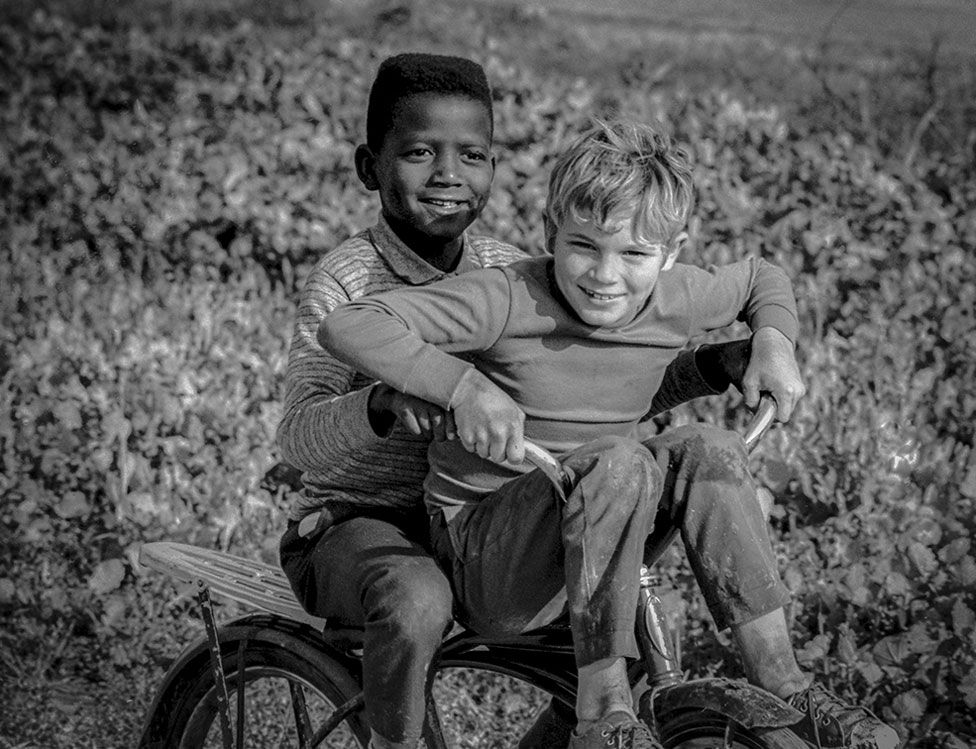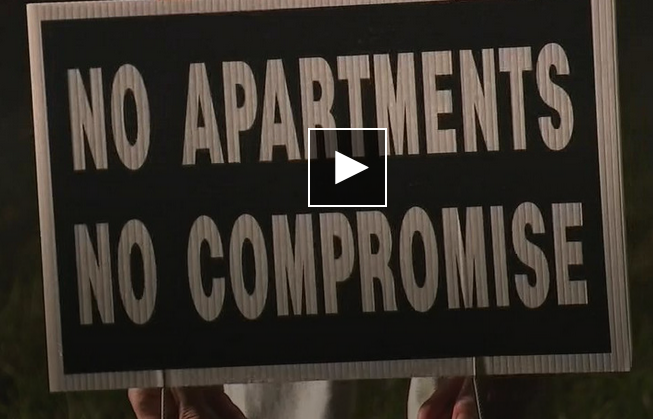by Akim Reinhardt
 Three things we know about #BLM, two obvious, one a bit more subtle.
Three things we know about #BLM, two obvious, one a bit more subtle.
1. Activists originally created the Black Lives Matter slogan to point out and push back against the generally unstated truth that in American society, black lives do NOT matter as much as white lives. That in America, black lives have always been cheap. They were literally commodified for two and a half centuries; police, vigilantes, and mobs have beaten and even killed black people with relative impunity; and white people have, in general, always been safer around police. To say “Black Lives Matter” is to point out all of this, to assert the morality of black lives mattering as much as white lives, and to insist that we strive for that equality in America.
2. Reactionaries immediately attacked the slogan. They misinterpreted the slogan, sometimes intentionally, often myopically, claiming it meant that ONLY black lives matter, which it did not. They countered with the slogan “All Lives Matter” as if it were a different and better slogan, when in reality, “All Lives Matter!” is the core message of “Black Lives Matter!” Because “Black Lives Matter” is really shorthand for “Black Lives Matter Too!”
3. Many white liberals support the Black Lives Matter movement, either quietly, or with yard signs and bumper stickers. This allows white liberals to define themselves as “allies” without actually doing anything substantive. It provides white liberals an opportunity to publicly perform their politics, wrapping themselves in the slogan and proclaiming they are not racist. As if racism is only (or mostly) about what you believe and say. But of course all biases, including sexism, homophobia, and classism, are truly evil because of what people do.
Nearly a decade after the birth of the Black Lives Matter movement, I’ve been thinking about a new slogan. Not a replacement, but an addition. One that isn’t about black people demanding justice, as important as that is. But one for white people to ingest and think about. One that urges them to do instead of say.
#BlackFriendsMatter
This is not me finger-wagging. That would be hypocritical. Yes, I have some black friends, but not that many, and none of them among my very closest. Rather, this is about getting white people such as myself (and non-black minorities who adopt social whiteness) to think about what black lives really are.
Yes, we need to work hard to stop the killing of unarmed, innocent black people, to stop the careless, state-sanctioned murder. But we cannot stop at the horror of a life being snuffed out while wheezing “I can’t breath!” As Americans, we also need to think long and hard about black lives as they are lived. And if black lives are a mystery to you, just an abstraction you’d like to see protected but have no real understanding of despite living in a city or county among them, that’s a serious problem.
If you live in a region that includes black people, and you don’t really know any black people, unless you’re an interminable shut-in, it means you’re participating in segregation. Even if you don’t think you are, and no matter how many yard signs and bumper stickers you brandish.
Of course you are. Most of us are. There can be no other explanation for the fact that America today, more than half a century after Jim Crow ended, is by many measurements as segregated as it has ever been.
Again, I’m not pointing fingers. Baltimore, Maryland is a highly segregated city, and I live in an overwhelmingly white Baltimore neighborhood. I’m part of the problem too. But the first step towards addressing any problem is recognizing it exists, along with our role in perpetuating it. And during the 21st century, recognizing the extent and depth of modern segregation has arguably been white liberal America’s biggest racial blind spot.
A lot of it begins with American parents who are, as a group, some of the most selfish people on the planet. All they really care about is themselves and their children. That’s understandable. There’s a lot of genetics and love involved. But the net result is millions of white American parents using their children’s welfare, particularly in the form of schooling, to justify and even deny their active participation in America’s racial segregation.
Most white Americans do not want their children to attend schools with poor black children, or even “too many”middle class black children. Behold:
About a fifth of American schools have only white children. Another fifth have no white children.
The segregation of American schools has a long and tangled history dating back to the end of the Civil War. For the better part of a century, it was the result of simply official segregation. Then amid the push for civil rights, there were some serious attempts to integrate public schools. I was a white beneficiary of that push.
Yes, I very much consider myself a white beneficiary of integration.
My public elementary school was largely white, but both my middle school and high school were highly integrated with large numbers of African American and Latino/a (mostly Dominican and Puerto Rican) students, along with smaller numbers of Asian Americans. Whites were maybe half the students at my middle school and perhaps a third of my high school. And I’m smarter for it. Sometimes I shudder at the thought of how much more naive and generally clueless I would be if I had attended schools where everyone was the same. How underdeveloped my social skills would be. How socially stupider I would be.
And trust me. I’m stupid enough. I don’t need any extra credit.
But it was a brief, shining moment of American school integration. From the git go, many white people resisted school integration. In the South, many white parents simply pulled their children out of integrated public schools, leading to the rise of private schools, particularly religious ones. That’s the real origin of America’s school voucher debate.
In the North, white urban protests against busing were vocal and even vicious, and ultimately a successful spur to resegregation as white families continued white flight patterns of settlement.
In much of America, free public schools were integral to the suburban dream, and they became the primary justification for segregation. Millions of parents ensured they and their children would have minimal interaction with black people by moving to lily white suburbs, and justified it in the name of “good schools.”
But eventually the black middle class began to grow, and as white flight and de-industrialization devastated many U.S. cities, millions of African Americans also moved out to the suburbs. So the white exodus continued.
Leaving behind post-WWII inner-ring suburbs, white Americans moved in increasing numbers to whiter, newer outer suburbs and even distant exurbs. American suburbs have since transformed from an nearly all-white domain to the new site of intense segregation, with pockets of white and black.
As has long been the case, most white Americans have few if any black friends because they have few if any black neighbors or schoolmates. By one fairly recent estimate, a majority of white Americans actually have no black friends, and overall, the average white Americans has just one black friend.
The good news is that amid a rising tide of white ethno-nationalism over the last five years, a majority of Americans still believe racism is wrong. Yet, not only do most whites not believe that they themselves are racist, some surveys find a majority of whites reject the idea that police systemically treat blacks differently than they treat whites. This, even though we have mountains of statistics and other evidence proving it true.
The ability of white people espouse multicultural ideals while sticking their heads in the sand about the realities of modern day racism and segregation is widespread. I was recently reminded of this amid a conflict over housing. While I was visiting a friend in a nearby suburb, he pointed out signs dotting many lawns that read:
No Apartments
No Compromise
My friend, who is neither white nor black, could not help but note the rich irony that some of these signs were posted on the very same lawns as Black Lives Matter signs.
The No Apartments No Compromise signs referred to a proposed apartment building in a largely white suburb, which developers want to place on the site of somewhat dilapidated strip mall. Of course no one has the temerity to say it’s about keeping out black renters. Maybe they refuse to believe they’re even thinking it. Instead they couch their protestations in concerns about infrastructure.
Yes, infrastructure.
How a single apartment building with a few hundred people would supposedly stress sewage and storm water systems, over crowd the local school, and snarl traffic.
To my mind, it doesn’t add up. A few dozen more kids won’t cause a school to burst. And nobody gets that riled up and intransigent about imaginary threats to storm sewers. After all, increased runoff could be entirely offset by simply creating some green space, and any environmentalist worth their salt understands that dense apartment living is actually much better for the environment than single family suburban housing.
To be fair, the concerns about traffic are legitimate, as they are in any car-riddled suburb. And at the same, this isn’t just about veiled racism; it’s also about veiled classism. American is about as segregated by class these days as it is by race.

One protestor danced around this, spouting old, discredited tropes about home ownership being the only legitimate path to the middle class.
I was born and raised in a well-to-do apartment building, replete with doormen. My mother’s still there. That apartment, now a co-op, is probably worth more than this protestor’s house. I would find such nonsense funny if it weren’t so pernicious. That protestor’s sudden and entirely wrong thesis about the merits of class fluidity is actually a weapon for enforcing geographically-based class rigidity.
It is only natural that we treat the people who are close to us better than the people who are not. Whether family members, friends, or even neighbors, people become more human to us when we interact with them meaningfully. And so yes, black lives matter, as much as any other lives, and we need to keep working to make that a reality instead of just a slogan. But black friends matter too. Because all human lives, whether black or white or brown, aren’t just breathing organisms. They are actually lived. And if you are white or socially white, and are effectively living without any black lives in yours, even as they live in your county or city, then in a way, those black lives don’t really matter to you.
Akim Reinhardt’s website is ThePublicProfessor.com
